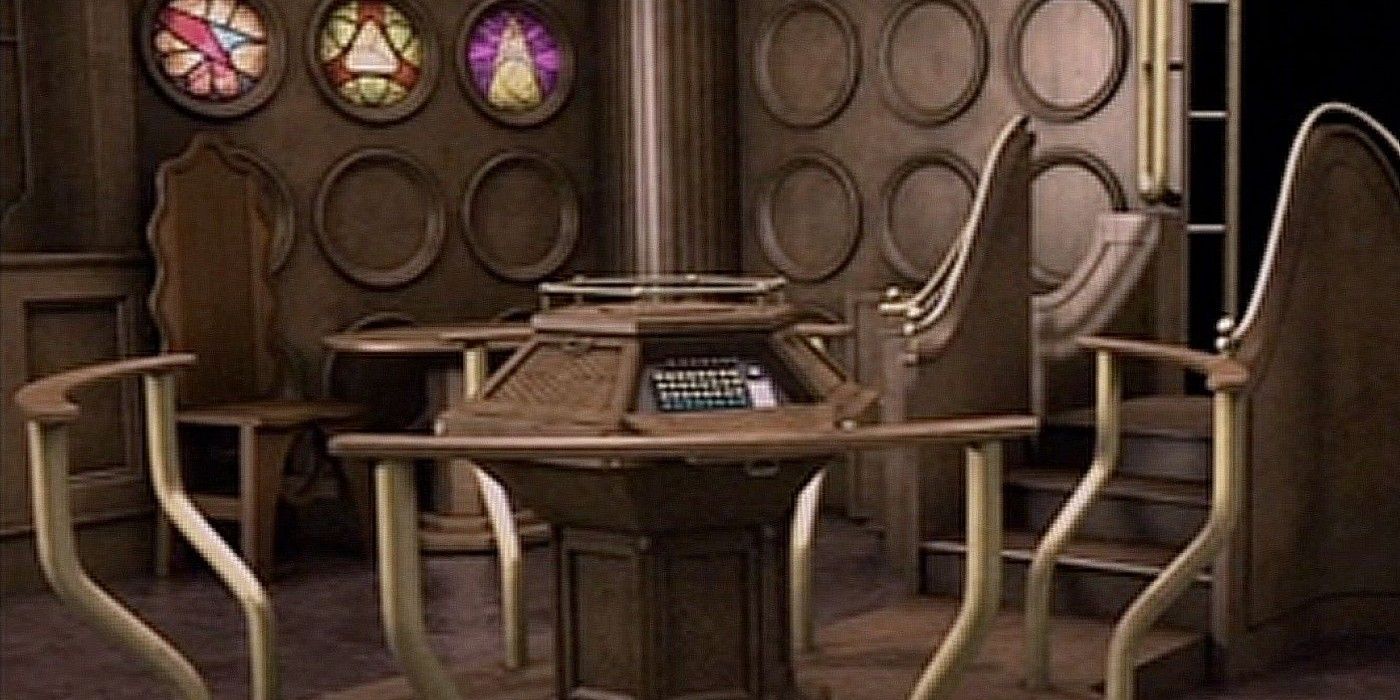Doctor Who once spent an entire season in a completely different TARDIS console room. The story and history of the TARDIS is almost as storied as the Doctor herself, and just as Doctor Who fans can never completely get used to a certain actor playing the iconic Time Lord, modern fans also can't get too attached to a particular TARDIS interior. But this wasn't always the case. Since Doctor Who was revived in 2005, the TARDIS console room has undergone a radical transformation every few seasons, usually when The Doctor regenerates or when a new showrunner is drafted in.
The alterations were never so frequent or so drastic in the original Doctor Who run between 1963 and 1989. Each of the main classic TARDIS design schemes were a riff on the original, with rounded alien-like panels covering the walls, a hexagonal console in the middle of the room, and the familiar 'up-and-down' pillar at the center. The console itself was rebuilt and modified several times through the years (and regenerations) and the room itself would also be freshened up, particularly during the Third Doctor's era. However, each of The Doctor's redecorations were based around the same white-walled, roundel-covered concept. In an attempt to make Doctor Who more grounded in the early 1970s, Jon Pertwee's Third Doctor spent much of his tenure just trying to make his TARDIS work, as the Time Lords had exiled him on Earth permanently. By the time Tom Baker had taken over, the TARDIS was back up and running but the interior was seldom shown. A remodel of the familiar white console room featured in a select few episodes, but then there was a drastic shake up.
In the debut episode of Doctor Who's original season 14, The Doctor takes his then-companion, Sarah Jane Smith, to a different, unused console room, and then strongly suggests this place was actually the original hub of the TARDIS. This console room remained The Doctor's base for the remainder of the season and was a massive visual departure from what had come before, with wooden panel walls, stained glass windows, and a smaller, cabinet-like console. Unfortunately, the Victorian-style console room only lasted a single season before the white, pimply decor returned. Reports conflict as to whether the wood of the previous set was proving problematic to maintain, or whether incoming producer, Graham Williams, simply wasn't a fan.
In many ways, this redesign was massively ahead of its time. Where Doctor Who spent the 20th century in more or less the same TARDIS surroundings, the introduction of a second console room did something that modern Who does on a regular basis - a complete TARDIS overhaul. In the revived series, the TARDIS has the ability to remodel its interior as easily as it's exterior should change, similar to changing a desktop theme on a computer, and this accounts for each radical redesign. Since changing the background on your smartphone every few weeks wasn't a thing in the 1970s, it's hardly surprising Philip Hinchcliffe didn't come up with the same explanation back then. Instead, revealing a previously-unseen alternate console room was classic Doctor Who's way of introducing a completely new style to the TARDIS.
The TARDIS designs of recent Doctors are said to mirror the respective personalities of their pilots, and this is also true of the Fourth Doctor and his secondary console room. The Victorian influence gave a distinctly gothic vibe, fitting in nicely with the Sherlock Holmes-esque demeanor Tom Baker took in that period of his Doctor Who run. Stories such as "The Masque of Mandragora" and "The Talons of Weng-Chiang" boasted a strong Conan-Doyle aesthetic, and where a futuristic TARDIS set might've felt jarring against that tone, the church-like secondary console room enhanced it. Fans were quite taken with the wooden console room, and fortunately, a return can't be ruled out. "The Doctor's Wife" confirmed that past interior designs were "saved" in the TARDIS memory banks, so a throwback to this Tom Baker classic can't be ruled out in the Jodie Whittaker era and beyond.
Doctor Who returns with "Revolution Of The Daleks" this Christmas on BBC and BBC America.


